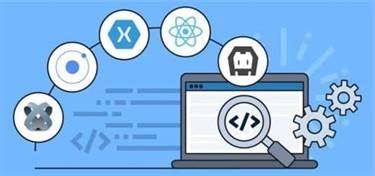What is AI? Everything to know about artificial intelligence
As AI applications accelerate across many sectors, it is vital that we reimagine our educational institutions for a world where AI will be ubiquitous and students need a different kind of training than they currently receive. Right now, many students do not receive instruction in the kinds of skills that will be needed in an AI-dominated landscape. For example, there currently are shortages of data scientists, computer scientists, engineers, coders, and platform developers. These are skills that are in short supply; unless our educational system generates more people with these capabilities, it will limit AI development.

There’s also fear that AI will cause mass unemployment, disrupt the economic balance, trigger another world war, and drive humans into slavery. Sign up for our newsletter to stay up to date with the latest research, trends, and news for Artificial intelligence. Artificial Intelligence (AI) Cases AI is very good at identifying small anomalies in scans and can better triangulate diagnoses from a patient’s symptoms and vitals. AI is also used to classify patients, maintain and track medical records, and deal with health insurance claims.
Ways to Ensure Data Privacy for AI-Based Apps
As the reader passes through
these parts, she is introduced to agents that take on the powers
discussed in each part. Part II is concerned with giving an intelligent agent the
capacity to think ahead a few steps in clearly defined environments. Examples here include agents able to successfully play games of
perfect information, such as chess. Part III deals with agents that
have declarative knowledge and can reason in ways that will be quite
familiar to most philosophers and logicians (e.g., knowledge-based
agents deduce what actions should be taken to secure their goals). Part IV of the book outfits agents with the power to handle
uncertainty by reasoning in probabilistic
fashion.[19]
In Part V, agents are given a capacity to learn.
- Situations where AI-powered robots take over from humans or weaken basic values frighten people and lead them to wonder whether AI is making a useful contribution or runs the risk of endangering the essence of humanity.
- In order to balance innovation with basic human values, we propose a number of recommendations for moving forward with AI.
- Well, no small reason for the attention
lavished on his paper is that, like Raymond Kurzweil (2000), Joy
relies heavily on an argument given by none other than the Unabomber
(Theodore Kaczynski). - They may not be household names, but these 42 artificial intelligence companies are working on some very smart technology.
- When researching artificial intelligence, you might have come across the terms “strong” and “weak” AI.
It makes more sense to think about the broad objectives desired in AI and enact policies that advance them, as opposed to governments trying to crack open the “black boxes” and see exactly how specific algorithms operate. Regulating individual algorithms will limit innovation and make it difficult for companies to make use of artificial intelligence. Some observers already are worrying that the taskforce won’t go far enough in holding algorithms accountable. For example, Julia Powles of Cornell Tech and New York University argues that the bill originally required companies to make the AI source code available to the public for inspection, and that there be simulations of its decisionmaking using actual data. After criticism of those provisions, however, former Councilman James Vacca dropped the requirements in favor of a task force studying these issues.
Intelligence
The Monte Carlo tree search (MCTS)
algorithm gets around this obstacle by searching through an enormous
space of valid moves in a statistical fashion (Browne et al. 2012). While MCTS is the central algorithm in AlpaGo, there are two neural
networks which help evaluate states in the game and help model how
expert opponents play (Silver et al. 2016). It should be noted that
MCTS is behind almost all the winning submissions in general game
playing (Finnsson 2012). As the book progresses, agents get increasingly sophisticated, and the
implementation of the function they represent thus draws from more and
more of what AI can currently muster. The following figure gives an
overview of an agent that is a bit smarter than the simple reflex
agent. This smarter agent has the ability to internally model the
outside world, and is therefore not simply at the mercy of what can at
the moment be directly sensed.
DeepMind continues to pursue artificial general intelligence, as evidenced by the scientific solutions it strives to achieve through AI systems. It’s developed machine-learning models for Document AI, optimized the viewer experience on Youtube, made AlphaFold available for researchers worldwide, and more. Though the safety of self-driving cars is a top concern of potential users, the technology continues to advance and improve with breakthroughs in AI. These vehicles use machine-learning algorithms to combine data from sensors and cameras to perceive their surroundings and determine the best course of action. A neural network is a type of machine learning that is made up of interconnected units (like neurons) that processes information by responding to external inputs, relaying information between each unit. The process requires multiple passes at the data to find connections and derive meaning from undefined data.
2 The Resurgence of Neurocomputational Techniques
Consider the impact that certain AI systems can have on the world as a whole. People can ask a voice assistant on their phones to hail rides from autonomous cars to get them to work, where they can use AI tools to be more efficient than ever before. Consider training a system to play a video game, where it can receive a positive reward if it gets a higher score and a negative reward for a low score.
There are few protocols for promoting research access or platforms that make it possible to gain new insights from proprietary data. It is not always clear who owns data or how much belongs in the public sphere. These uncertainties limit the innovation economy and act as a drag on academic research.
A guide to artificial intelligence in the enterprise
In addition, 27 percent of respondents reported at least 5% of earnings could be attributable to AI, up from 22 percent a year earlier. Algorithmic complexity theory as developed by Solomonoff,
Kolmogorov and Chaitin (independently of one another) is also
relevant. It defines the complexity of a symbolic object as the
length of the shortest program that will generate it. Proving that
a candidate program is the shortest or close to the shortest is an
unsolvable problem, but representing objects by short programs that
generate them should sometimes be illuminating even when you can’t
prove that the program is the shortest.

Also in attendance were Allen Newell, a computer scientist, and Herbert A. Simon, an economist, political scientist and cognitive psychologist. The two presented their groundbreaking Logic Theorist, a computer program capable of proving certain mathematical theorems and referred to as the first AI program. The creation of a machine with human-level intelligence that can be applied to any task is the Holy Grail for many AI researchers, but the quest for artificial general intelligence has been fraught with difficulty. And some believe strong AI research should be limited, due to the potential risks of creating a powerful AI without appropriate guardrails.
What is Artificial Intelligence (Ai)?
But without adequate safeguards or the incorporation of ethical considerations, the AI utopia can quickly turn into dystopia. Fully autonomous self-driving vehicles aren’t a reality yet but, by some predictions, the self-driving trucking industry alone is poised to take over 500,000 jobs in the US inevitably, even without considering the impact on couriers and taxi drivers. Google’s parent company, Alphabet, has its hands in several different AI systems through some of its companies, including DeepMind, Waymo, and the aforementioned Google.
Soft computing was introduced in the late 80s and most successful AI programs in the 21st century are examples of soft computing with neural networks. Generative models have been used for years in statistics to analyze numerical data. The rise of deep learning, however, made it possible to https://www.globalcloudteam.com/ extend them to images, speech, and other complex data types. Among the first class of models to achieve this cross-over feat were variational autoencoders, or VAEs, introduced in 2013. VAEs were the first deep-learning models to be widely used for generating realistic images and speech.
